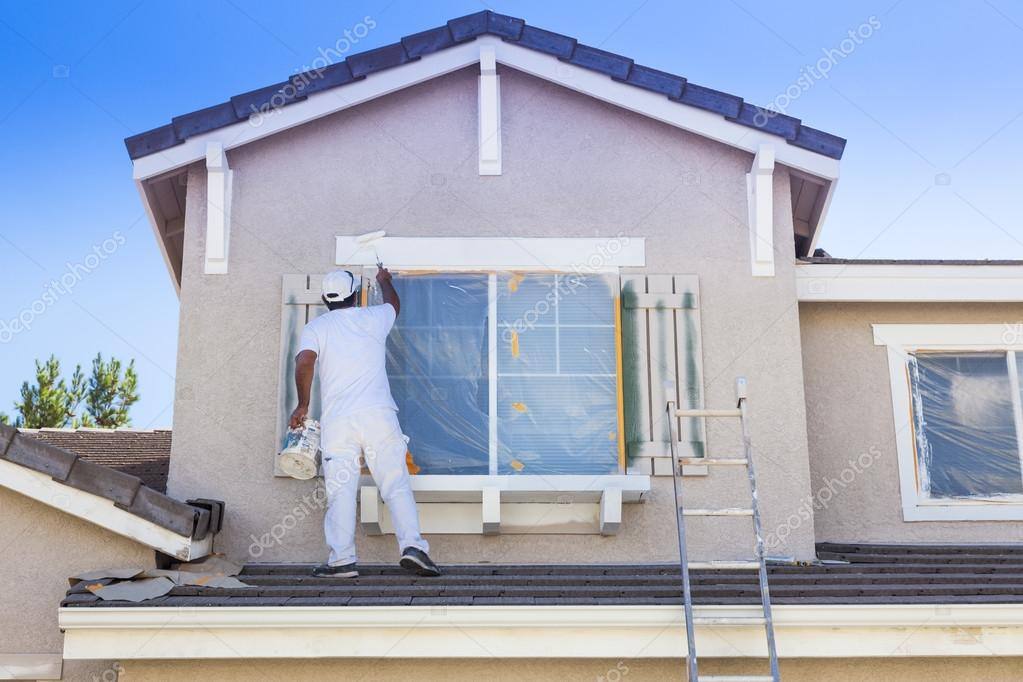Introduction: The Importance of Proper Preparation and Tools
Painting the exterior of your home can seem like a daunting task. You might be thinking, “What exactly do I need to paint my house?” or “Is it even worth doing it myself?”These are common questions that homeowners have when considering this kind of project. At Rhino Shield, we understand these concerns because we’ve been in the business of exterior painting for over 20 years.
When you look at the outside of your home and notice peeling paint or fading colors, it’s easy to feel overwhelmed. The fear of not knowing where to start or if you’ll do a good job is real. We’re here to walk you through the process, explaining what tools and materials you need and why they matter. By the end of this article, you’ll have a clear understanding of what’s involved and whether it might be worth hiring a professional.

Inspection Tools: The First Step to a Successful Paint Job
Before diving into painting, the first step is to inspect your home’s exterior. This helps identify any underlying issues that could affect the quality of your paint job.
- Moisture Meter: Preventing Future Paint Failures Moisture is one of the biggest culprits behind peeling and bubbling paint. A moisture meter helps you detect moisture in your walls, whether you have stucco, wood, or composite siding. There are two main types: probe meters and ultrasonic meters. Using these tools ensures that you don’t paint over damp areas, which could lead to adhesion problems later on.
- pH Testing: Ensuring Surface Compatibility For masonry surfaces like Hardy board and stucco, testing the pH level is crucial. High alkalinity can cause paint to peel or discolor. A pH test kit helps you determine if the surface is ready for painting or if it needs treatment to balance the pH levels.
- Lead Paint Testing: Safety First If your home was built before 1978, there’s a chance it could have lead paint. Lead test kits are essential to ensure you don’t expose yourself or your family to harmful lead dust during preparation and painting.
- Paint Type Testing: Oil vs. Water-Based Knowing what type of paint is already on your home is important. Simple tests can reveal whether the existing paint is oil or water-based. This information helps you choose the right primer and paint for the job.
Essential Equipment for Exterior Painting
Once the inspection is complete, the next step is gathering the necessary equipment. Having the right tools can make a significant difference in the quality and efficiency of your work.
- Pressure Washer: Cleaning for Better Adhesion A clean surface is critical for paint adhesion. A good pressure washer removes dirt, grime, and loose paint, ensuring that your new paint will stick properly.
- Ladders and Scaffolding: Safety and Reach Quality ladders and scaffolding are essential for reaching high areas safely. If your home is more than two stories, you might also need scaffolding or a scissor lift. Investing in sturdy, reliable ladders can make your work safer and more efficient.
- Personal Protection Equipment (PPE) Safety first! Protective gear like masks, gloves, and goggles protect you from dust, paint fumes, and other hazards.
Painting Tools and Materials
With the surface prepped and safety gear in place, it’s time to focus on the painting tools and materials.
- Paint Sprayers: Speed and Efficiency An airless paint sprayer can save you a lot of time, especially for large surfaces. You’ll need different tip sizes for primers and topcoats to ensure even coverage.
- Tarps and Masking Equipment: Protecting Non-Painted Areas Tarps and masking tape are essential for covering areas you don’t want to paint, such as windows, doors, and landscaping. This step helps achieve a clean, professional look.
- Wet Mil Gauges: Ensuring Correct Paint Thickness To ensure you’re applying the right amount of paint, wet mil gauges help you measure the thickness of each coat. This ensures even application and adherence to manufacturer recommendations.
- Brushes and Rollers: For the Finishing Touches High-quality brushes and rollers are necessary for cutting in edges and corners where a sprayer can’t reach. They also help achieve a smooth finish on smaller areas.
The Importance of Technique
Having the right tools is just part of the equation. Knowing how to use them properly is equally important.
- Proper Application Techniques: Beyond Just Tools Even with the best equipment, poor technique can ruin a paint job. Proper painting techniques, like consistent brush strokes and correct spray patterns, ensure a smooth, even finish.
- Following Manufacturer’s Guidelines Always follow the manufacturer’s guidelines for paint application, including the recommended wet mil thickness. Applying paint too thin or too thick can lead to premature failure or a poor finish.
Conclusion: Is DIY Worth It?
Painting your home’s exterior is a big job that requires the right tools, materials, and techniques. While it’s possible to do it yourself, it’s important to consider the time, effort, and expertise required. At Rhino Shield, we understand the complexities of exterior painting and are here to help.
Rhino Shield might not be the right choice for everyone. If you’re someone who enjoys DIY projects and has the time to learn and prepare, painting your home can be a rewarding experience. But if you’re short on time, lack the necessary tools, or want a guarantee of a professional finish, hiring a professional might be the best option.
In summary, you’ll need various inspection tools, essential equipment, and proper painting tools and materials to successfully paint the exterior of your home. By understanding and preparing for each step, you can achieve a beautiful, long-lasting finish. Whether you decide to tackle it yourself or hire a professional, being informed is the key to success.
If you’d like a free, no-obligation quote for a Rhino Shield paint job, click the button below.
















